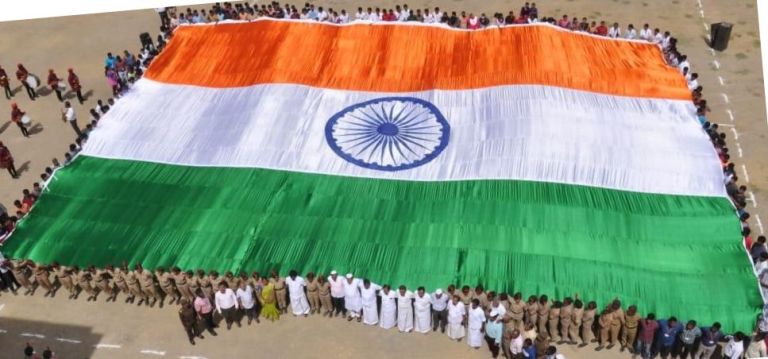This (year) March, UGC, the higher education regulator of the country, put the stamp of approval on the UGC (Minimum Standards and Procedure for Award of PhD Degree) Regulations, 2022, which introduces entry of Undergraduate students completing a four-year program under the NEP(UGCF) curriculum (of 160 credits) into PhD program without undertaking master’s program. Accordingly, a 4-year/8-semester bachelor’s degree programme graduate having a minimum of 75% marks in aggregate or its equivalent grade on a point scale wherever the grading system is followed, is eligible to directly write the NET and if s/he qualifies, can get into PhD without having to study in the master’s program as has been the practice until now.
The University Grants Commission–National Eligibility Test (UGC–NET), will carry 70% weightage and interview 30% for qualifying in NET for such candidates. A relaxation of 5% marks or its equivalent grade may be allowed for those belonging to SC/ST/OBC (non-creamy layer)/Differently-Abled, Economically Weaker Section (EWS) and other categories of candidates as per the decision of the Commission from time to time as per the regulations notified in November 2022 now being operationalized from this year. UGC-NET, a computer-based test (CBT) is held twice a year in June and December by NTA, is an exam to determine the eligibility of Indian nationals for the “award of Junior Research Fellowship (JRF) and appointment as assistant professor”, “appointment as assistant professor and admission to PhD” and “admission to PhD only” in Indian universities and colleges.
Permitting undergraduate students into PhD programs through the National Eligibility Test (NET) will strengthen the research ecosystem in India and “open up” many opportunities for students at a “very young age” in research, UGC Chairman Jagadesh Kumar told news agency ANI while adding one of the objectives of NEP is to strengthen the research ecosystem in our universities. “When we permit undergraduate students into PhD programs, you will have a lot of young people getting into research at a very young age, and they are really creative.”
So, how does this new change play out for the PhD scholarship and research? Will masters’ courses lose some of sheen and what will be the NET status in the new set up, are some of the common questions that need explanation. So, what is the change?
The UGC has also done away with the individual universities or HEIs conducting their own entrance tests for PhD admissions. As per the March 27 notification, the NET score can be used for admission to PhD programmes in place of entrance tests conducted by the different universities/HEIs.
From June 2024 onwards, the NET candidates will be declared eligible in three categories: Category-1: Eligible for (i) admission to PhD with JRF and (ii) Appointment as Assistant Professor.
Catcgory-2: Eligible for (i) admission to PhD without JRF and (ii) appointment as Assistant Professor.
Catcgory-3: Eligible for admission to PhD only and not for the award of JRF or appointment as Assistant Professor
Educationists and administrators are mostly welcoming the new reform as it offers an academic career pathway to meritorious students interested in research or teaching. It will certainly, add to zest and profile of PhD programs. It has also brought equivalence to international system and aligned the degrees.
A section of educationists, at the same time, feels that these reforms seen together with earlier reforms like making PhD optional Assistant professorship, will lower the standards and set in a mad rush. They fear it will have an adverse impact on the quality of research as institutions can now offer degrees more easily without maintaining quality. Despite India’s research output growing by around 54%, taking it to the fourth position globally in producing academic papers, and Indian entries in QS 2023-24 subject rankings seeing an 18.7% rise making India the second most represented Asian country with 66 ranked universities, the quality and relevance of many of these papers remain questionable, as only 15% of them have been cited in top academic journals.
As per current norms, a professor as a research supervisor can guide a maximum of eight students at a time, an associate professor six and an assistant professor four. With only about 10,000 JRF seats, a lot of students would opt for direct PhDs. Then, the second causality may be the master’s program itself as it will lose sheen and purpose in years to come.
However, in view of experts master’s programs are not going anywhere and remain relevant for a large population of students. According to Prof Sudhir Sopory, former VC of JNU and a plant scientist, direct entry is for meritorious students and a number of students had been feeling a year in masters’s is just the revision of what has already been transacted in UG degree program. “But a large number of students will still need to pursue master’s program to sit in the NET and for making a career in teaching in higher education,” he adds. He is of the view that UG programs in particular the curriculum of the 4-year UG degree programme need to be made with due diligence and teaching pedagogies must have a good portion of research to stimulate the student.
With a likely increase in the intake of PhD students, there is a risk that the standards of research are watered down even though the size of research community will increase, so will the research culture in academic institutions. “Engineering and science students, already familiar with research methodologies, may find this transition worthwhile and enhance their careers in research, serving their fields. While ensuring robust infrastructure, funding, and mentorship, universities need to take great care to maintain quality in research amid increased admissions. Under the management of such factors, institutions can use this policy as a springboard to improve innovation and uphold academic excellence. It is going to change the higher education and research landscape in India,” says Dr. Bhupendra Bahadur Tiwari, Director, School of Economics and Commerce (SOEC), CMR University.
According to Dr. Aman Mittal, Vice President, LPU (Lovely Professional University), the process of direct admission to a PhD after a 4-year or 8-semester programme is a significant step towards boosting domestic research and supporting the ‘Making in India’ initiative. “By facilitating admission of academically promising candidates to research programs the decision strengthens India’s position in the global research landscape and enables the country to compete with nations like China and the USA in terms of research output. It signifies a positive stride towards aligning the Indian education system with international standards,” he adds.
The new regulation will, however, find a new group of takers, the engineering graduates. “This new norm is especially beneficial to engineering students and those pursuing four-year degrees. It facilitates access to advanced research opportunities, encouraging early innovation and contributions to technological advancements. However, the onus will be on institutions to maintain strong evaluation standards to guarantee that the quality of PhD research is not compromised,” says Dr. G. Pardha Saradhi Varma, Vice Chancellor, KL Deemed to be University.
With about 24% faculty positions vacant and a target of 50 GER by 2030, the Government in its own scheme of things, may have tinkered with the PhD ecosystem to make more teachers and researchers available, but the New Education policy of India in view of some people being highly influenced by the American system of education is half baked pudding when Indian universities do not enjoy the same level of autonomy and freedom as American universities, environments, labs and research culture. The changes brought about in the PhD admission, however, offer being the big opportunity for giving an impetus to research culture in the entire education system by more grants and policy tweaks to make academic excellence aspirational among the students.
—-Autar Nehru













